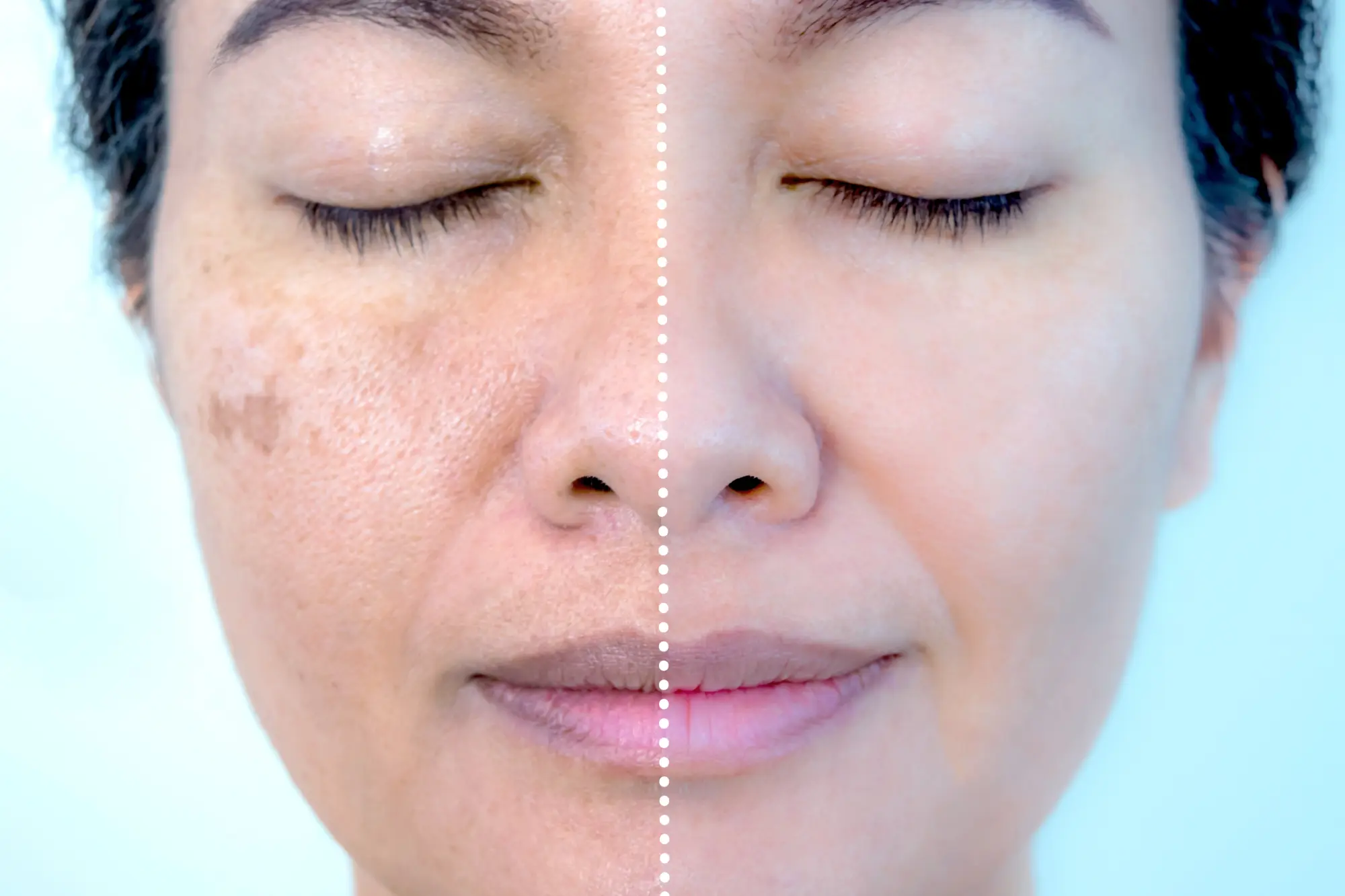
Sun Damage
- Home
- Sun Damage
Sun Damage Repair & Skin Health Terre Haute & Vincennes
The sun can warm your skin or wear it down. Every sunburn, every afternoon outdoors without protection, every year spent "getting some color" it all adds up.
You can't erase the past, but you can take control of what comes next.
At Biltmore Dermatology, we help you repair visible sun damage, detect silent risks early, and build skin health that lasts.
What Is Sun Damage?
Sun damage, or photoaging, is the cumulative effect of years of ultraviolet (UV) radiation on your skin. While a tan might fade, the effects of UV exposure go deep — altering your skin's DNA, structure, and immune response.
Sun damage causes:
- Wrinkles and fine lines
- Brown spots (solar lentigines)
- Uneven skin tone and texture
- Broken blood vessels (telangiectasias)
- Thinning, fragile skin
- Increased risk of precancerous lesions (actinic keratosis) and skin cancers
You might not see it at first — but UV damage is permanent without intervention.
How Sun Damage Happens
Two types of UV rays cause most skin damage:
- UVA rays: Penetrate deeply into the skin, causing premature aging (think wrinkles, leathery skin, uneven tone)
- UVB rays: Damage the surface of the skin, causing sunburns and contributing to skin cancer
Both types pass through clouds. Both types pass through car windows. Both types accumulate — whether you "meant to" tan or not.
Signs of Sun Damage
Some signs show up early. Others don't reveal themselves until decades later.
Look for:
- Fine lines and deep wrinkles (especially around the eyes, mouth, and forehead)
- Mottled pigmentation (blotchy or uneven skin color)
- Brown spots and liver spots (solar lentigines)
- Skin that bruises or tears easily
- Persistent redness or rough patches
- Loss of elasticity ("crepey" skin)
- New or changing growths that bleed, itch, or don't heal
Early detection and early action make all the difference.
Why Sun Damage Matters Beyond Appearance
It's not just about how your skin looks. Sun damage reprograms your skin's immune system, making it less able to detect and repair mutations.
Long-term effects of untreated sun damage can include:
- Actinic keratosis — a precancerous condition that can progress to squamous cell carcinoma if untreated
- Basal cell carcinoma and squamous cell carcinoma — the two most common types of skin cancer linked to cumulative UV exposure
- Melanoma — the most dangerous form of skin cancer, often tied to severe early-life sunburns
Learn more about early detection and treatment Types of Skin Cancer
How We Treat Sun Damage at Biltmore Dermatology
Treatment depends on the depth and severity of your damage — and your goals.
Topical Repair
Prescription-strength retinoids or antioxidant-based regimens improve skin texture, reduce fine lines, and slow further photoaging.
Procedural Options
We offer professional chemical peels to gently remove damaged outer skin layers, helping to lighten sunspots, soften roughness, and stimulate healthier renewal. For patients needing deeper texture repair, we also provide laser treatments designed to target pigmentation, rebuild collagen, and smooth sun-worn skin.
Advanced Non-Surgical Care
For precancerous lesions or early skin cancers, IG-SRT (Image-Guided Superficial Radiation Therapy) provides a non-invasive treatment option that avoids surgical scarring.
Ongoing Skin Monitoring
Because long-term UV exposure raises skin cancer risk, we recommend annual Yearly Skin Exams to catch changes early — when they are easiest to treat.
Our goal is clear: Repair what we can. Monitor what matters. Protect what's ahead.
What You Can Do Now
- Schedule a professional skin exam. (Especially if you have a history of sunburns, outdoor work, or tanning bed use.)
- Start a medical-grade skincare regimen. (OTC creams won't fix structural UV damage.)
- Use real sun protection daily. (Broad-spectrum SPF 30+ — even on cloudy days.)
- Stay alert. (Report any new, changing, or bleeding spots immediately.)
You can't undo the sun exposure from yesterday — but you can protect every day forward.
Why Choose Biltmore Dermatology?
- 24+ years of dermatology experience
- Board-certified dermatology provider Ryan T. Patterson, NP-C, DCNP
- Expert diagnosis of visible and invisible sun damage
- Advanced skin cancer screening and prevention protocols
- Trusted care for Terre Haute, Vincennes, and surrounding Indiana communities
We focus on fixing what matters — and building a future where your skin is protected, monitored, and strong.
It's Never Too Late to Start
You don't need perfect skin to deserve real care. You don't need a visible spot to justify a checkup. And you definitely don't need to wait until something hurts.
If you've lived in the sun, it's time to live smarter with your skin.
No referral is needed. Walk in today. Stay for the care and expertise.
Come for answers. Come for protection. Come for the care.